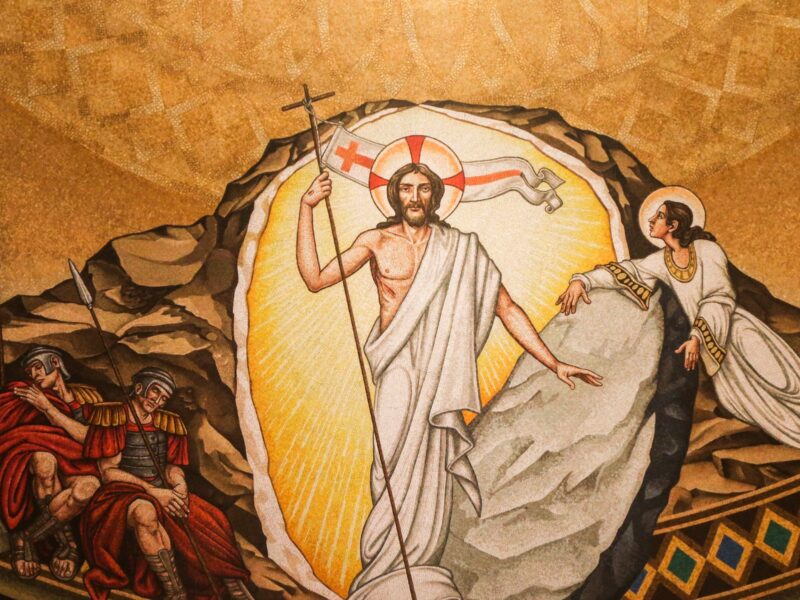
A Name And A Face
Fifth Sunday of Easter. Fr Vivian Boland shows how, in Christ, we receive the answer to the pleas of Moses.
The image of many mansions leads us into thinking of heaven as a physical place, which of course it must be in some sense if it is to accommodate our resurrected bodies.
But Jesus is speaking in the first place about the dimensions of God’s love, which is not measured by any of our standards whether temporal or spatial, imaginative or conceptual. The love of the Father is extravagant and generous, a love that comes to find us and in which there is room for everyone. The only measure of it we are given is Jesus himself who is the way to it, the truth of it, and the life it brings.
This solemn ‘I AM the way, the truth and the life’ is just the latest in a series of such statements that punctuate John’s gospel — I AM the bread of life … the living bread … the light of the world … the resurrection and the life … the door … the good shepherd … the vine.
We find examples in the other Gospels too: ‘Do not be afraid: it is I’ (literally, I AM) (Mark 6:50). When Moses asked God his name God replied ‘I am who I am’ (Exodus 3:14). The ‘I am’ statements in the gospels have to do with this: clearly we are being taught that Jesus is entitled to the divine name, he is God present among us.
The same Moses who asked God’s name later asked to see God. In response he was told that he could not see God’s face and live, but that he would be allowed to see God’s back (Exodus 33:18, 21-23). ‘No one has ever seen God’, we are told in the prologue to John’s Gospel, but ‘the only Son who is in the bosom of the Father has made him known.’
In today’s gospel reading the apostle Philip asks to see the Father: Jesus tells him that to have seen him is to have seen the Father, for Jesus is in the Father and the Father is in Jesus.
So, in giving us a name for God and in showing us the face of God, Jesus is not only a greater one than Moses but is also God’s fullest response to the requests made by Moses. We are given a name where Moses was not: it is the name of Jesus. We are allowed to see God’s face where Moses was not: it is the face of Jesus, the only Son who reveals the glory of the Father.
The law was given through Moses — that first instalment of truth, God’s word dwelling among his people as the standard by which they should live. Grace and truth have come through Jesus Christ — that final instalment of truth, God’s word pitching his tent among us. He is not only now the concrete standard or norm for all our living. He is also the love that makes it possible for us to live, as we ought and as we desire, in freedom and truth and love.
For God’s people escaping Egypt, Moses is the one to whom God reveals the way they should take. From the mountain of his encounter with God he brings the tablets of the truth by which they should live. He leads them to the threshold of the Promised Land and so to the life God had prepared for them. Now it is Jesus who is not only a messenger of these things but who is in his own Person the way, the truth and the life.
As God’s people were called from slavery in Egypt to freedom in the Promised Land, so those who have come to believe have been called out of darkness into his wonderful light, as St Peter tells us in the second reading. The destination now is not a geographical one, not the earthly paradise of Galilee and the Jordan valley. The destination is simply the Father who is love and who has first loved us.
It is strange to be told that believers will do even greater things than the Son because he has returned to the Father. Here is another reason why we need the Spirit, as Paul will explain (1 Corinthians 2:12), to help us understand the gift we have received, what it means to be living stones in that spiritual house, living mansions in the city of God.


